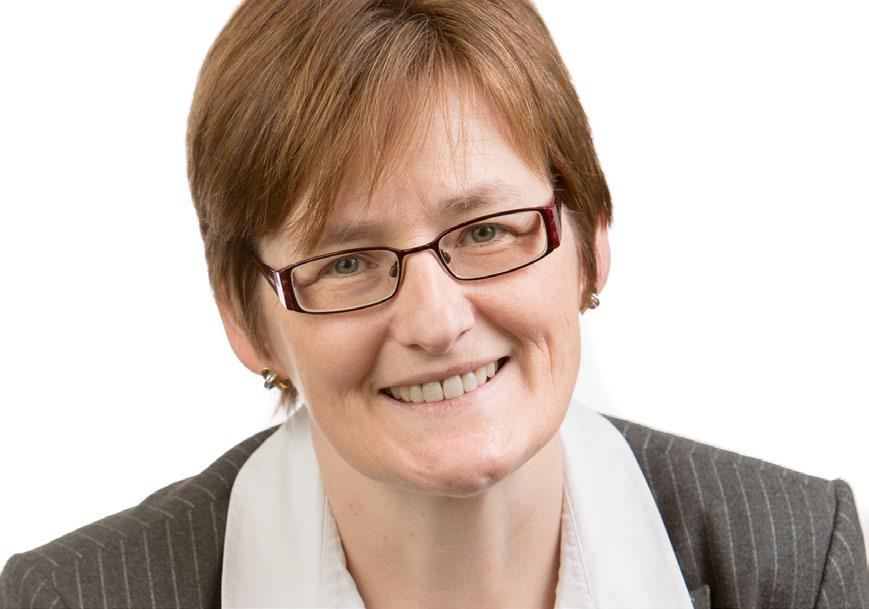
6 minute read
Care sector investment
Care sector investment and Covid-19
What are the implications of the Covid-19 crisis for investment in the adult and specialist care sector? Vincent Buscemi, Wendy Wilkes and Sarah Greenhalgh of Bevan Brittan give their views
The care sector came under enormous strain during the height of the Covid-19 pandemic and indeed for a period of time was viewed as being at the epicentre of the outbreak. The resilience and professionalism of care operators and staff helped the sector come through the worst of the crisis and now, fortunately, there is a quieter period in which to take stock – and prepare for any possible second wave or localised spikes in infections.
But what are the implications of the crisis for investment in the adult and specialist care sector? The sector, along with healthcare more broadly, has traditionally been seen as a safe harbour for long term investment due to its relative immunity from market cycles of boom and bust. And indeed, one positive arising out of the pandemic could be to attract new investors who have not historically taken a stake in the sector as they turn away from other asset classes like commercial real estate which have become much more challenged.
Short and mid-term challenges At the same time, however, there is no denying that parts of the care sector face challenges of their own. This especially applies to elderly care. It was already grappling with financial pressures long before the coronavirus appeared but now it is wrestling with a double whammy of occupancy rates becoming depressed while costs (such as providing PPE, extra staffing and carrying out additional cleaning protocols) have risen.
Some analysts believe that occupancy rates are likely to fall by 10% or more from their pre-pandemic levels – pushing them down into the low eighties or even seventies. Carterwood estimates that occupancy rates were at 87% in January 2020 and will fall to a low of 79% by April 2021 – not recovering to prior levels until late 2022 or 2023.
Other pressure points include the ever increasing difficulty of obtaining and retaining staff in a traditionally low paying industry, while recent flash quarantine restrictions on countries such as Spain and then France make managing staffing levels even harder. Ensuring compliance with evolving regulatory guidance and requirements from CQC as the pandemic progresses is another management challenge.
Adult specialist care, meanwhile, appears to be in stronger health. It did not suffer the same pressures or high profile problems that the elderly sector did during the height of the pandemic. There is growing demand in the private funded market and ongoing investor interest in supported living settings for adults with long-term healthcare needs such as mental health or learning disabilities.
How to address the challenges and thrive? Despite all of the challenges facing social care, we believe that there are models of investment and partnership that offer a robust way forward for the future. Some of these were already emerging before the crisis, but have been accelerated and expanded because of it. These now need to be built on as the industry takes stock and moves forward.
Collaborations and joint working One of the keys to surviving and thriving is to maintain and embed the temporary/emergency collaboration arrangements made during the pandemic.
Through the crisis, there was a growing and powerful sense that the NHS, local authorities, registered providers of social housing (RPs), commercial providers and indeed investors are all part of the care ecosystem alongside formal care operators, and need to find innovative ways of working with one another as part of a ‘national health and care system’.
Vincent Buscemi, Bevan Brittan

Wendy Wilkes, Bevan Brittan
There were a myriad of examples of care homes collaborating with health care providers such as hospitals and GP practices to access and share additional staffing resources and equipment. There was also a growth in collective purchasing agreements so as to secure the necessary PPE and leverage scale to obtain better value for money. RPs also worked with care providers, local and health authorities and the NHS to provide and source ‘safe harbour’ accommodation. The result of these temporary measures has been growth in a more collaborative way of working, and these bonds are now being formalised into a contractual footing. This will only serve to increase resilience and efficiency in the sector, strengthening operators financially as well as operationally.
Investor models As new investors enter the market, there is a real opportunity to shape sustainable delivery models for the future.
We have begun to see more instances of investors working with local authorities to set up new RPs to increase delivery of new facilities and address shortfalls in local markets. With the greater commercial freedoms available to local authorities today, there are many models of investment partnership and collaboration possible. In the RP scenario, a care package can be overlaid onto the housing being provided. The care made available is not dictated by the terms of the housing contract. There are many different models – ranging from home or domiciliary care to extra care housing, supported housing, and care villages.
We have also seen a gradual increase in lease-based provision through RPs, although this is an evolving model. Under this approach, investment funds effectively act as an infrastructure investor, buying assets that are then leased to an RP. However, strong financial and governance arrangements are needed to ensure such arrangements are successful. There have been some high profile cases where RPs have been unable to manage the lease terms in a sustainable way, and the Regulator of Social Housing (RSH) (which regulates RPs) has taken regulatory action. One case resulted in the RP appealing against the RSH’s actions to the High Court earlier this year. The Court upheld the RSH’s judgement.
Whilst controversial, there are ways to adjust the model to ensure that it works for both RP and investor and to allay regulatory concerns. This model may yet emerge as a more sustainable long-term source of growth.
Joint ventures JVs are nothing new, but are likely to form an increasingly important part of the investment mix for adult social care. The trend of moving more services out of primary care into secondary and community settings is likely to continue, with hospitals becoming ever more focused on providing acute services. JVs can bring public and private parties together across health and housing to renew under-utilised sites and old facilities to help meet today’s needs. We are likely to see growing demand for intermediary care facilities, whether that is offering step-up/down and rehabilitation/recovery services, or longer term care such as supported living or residential care services. As a firm we have seen an increasing number of successful long-term cross-sector JVs, with organisations working together to provide tenures and services across the same site to fit customer requirements for the long term.
A solid outlook The pandemic has shone a powerful spotlight on the key role played by social care in supporting the wellbeing of countless individuals up and down the country.
This, combined with the UK’s aging demographic, only reinforces the fact that the care sector is likely to remain of inherent interest to investors. There may be short and medium term challenges to the elderly care sector in particular, but demand is likely to renew itself over time. As Carterwood observed in their briefing note referred to earlier: “Notwithstanding the immediate and very obvious short and mid-term pressures facing care operators, it is encouraging that over the longer term we predict a stable and resilient picture for care home demand.”
Independent care operators, local authorities, RPs and investors need to continue to explore alternative models of investment and partnership to unlock new value, drive innovation and deliver the services on which so many people depend. n










